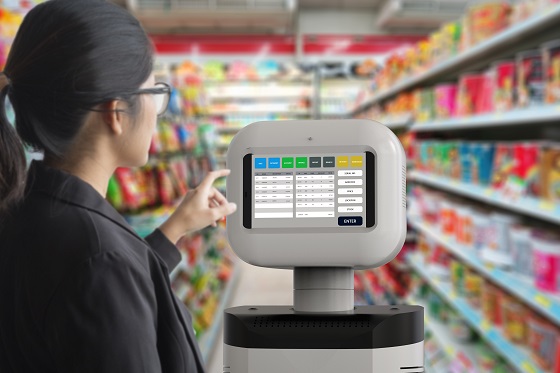
Automation is ubiquitous in manufacturing. Many of the increases and innovations in automation in manufacturing result from new capacities. Once a robot can palletize cases of baby wipes, it’s only a matter of time before the robot begins palletizing those baby wipes.
That’s not true in all industries. Robots, for example, aren’t very good at agriculture. It’s not a natural playing field for them. As labor shortages hit hard and demand increases, though, agriculture is getting automated anyway.
Retail is another area where automation is pushing ahead, but not because retail jobs are tedious, repetitive or dangerous.
Retail jobs are important in the United States, accounting for 13% of all jobs. Compare that to manufacturing, which supplies 8.8% of American jobs. Unlike jobs in manufacturing, retail jobs don’t pay well or offer good benefits. They often end up being part-time even for workers who want full-time jobs, and the schedules are often unpredictable and inconsistent. Retail workers are typically on their feet all day, and they are at the mercy of unpleasant and demanding customers.
These aren’t things that add up to a perfect robot job. Yet, with rising minimum wages and disgruntled retail workers, retail is working on automation.
Fulfillment
Start with the things that are relatively easy to automate. Warehouse work can definitely be done by robots, with long-term savings based on the greater efficiency of automation. Is the upfront investment worthwhile? That’s really the question. As consumers increasingly embrace in-store pickup for online orders, separating shopping from pickup could make this part of retail work well for automation.
Delivery by drones or self-driving trucks is also realistic, from the point of view of technological capacity. Laws and consumer reactions make both of these options less appealing, though, and costs are still an issue.
Customer interaction
Collaborative robot Pepper has been successful as a store greeter. Beacons — special sensors that send messages to customers’ phones — and other “smart shelf” technology allow products to hand-sell themselves with coupons and messages. Shoppers are willing to check themselves out and AI is on track to replace cashiers.
Customers have for years now been reporting that they prefer to use their phones rather than to (try to) get information from sales clerks. This usually connects with poorly informed sales clerks. Even so, it’s another area where automation could replace humans.
Security
Security cameras, facial recognition technology, and “smart baskets” that automatically scan items as they go into a cart are all technologies currently in ue to fight shoplifting.
Walmart received a patent for a robot shopping cart earlier this year and Alexa is automating some Amazon shopping functions. Clearly, retail automation is a question not of whether, but of when.
